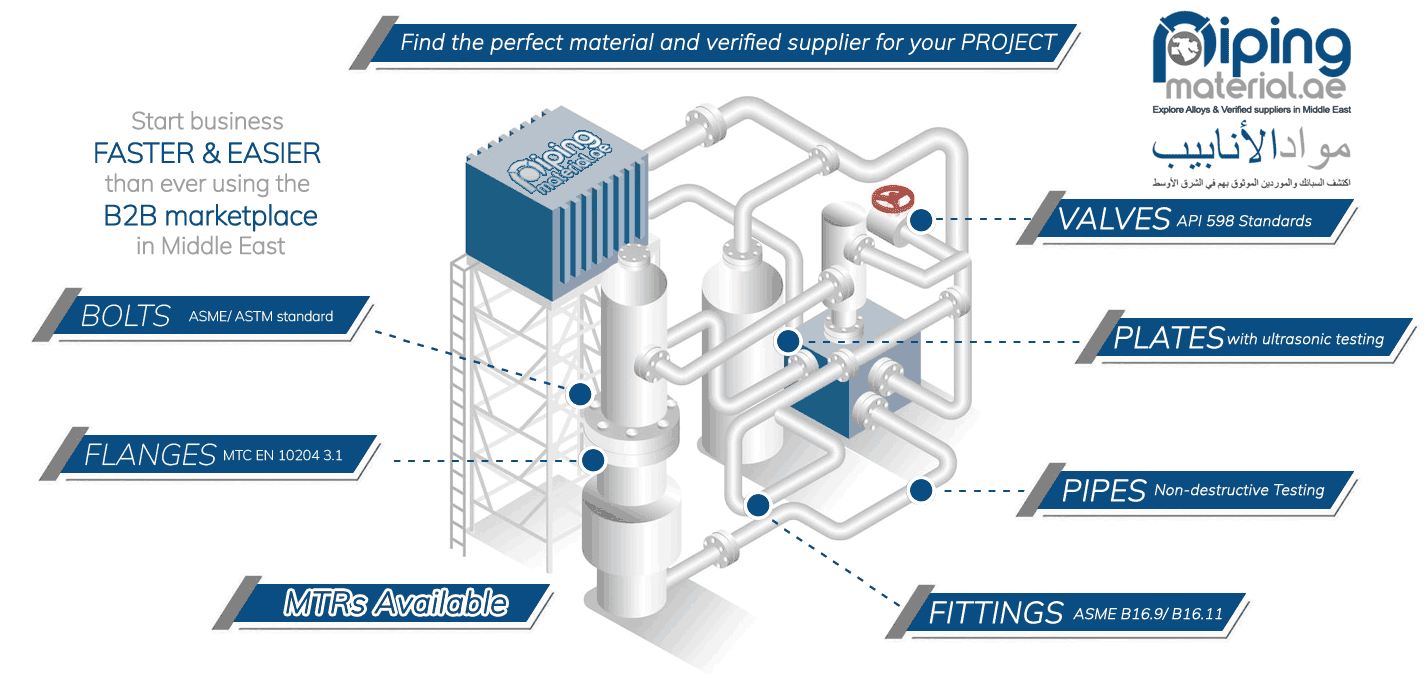Metal flanges are mechanical parts that join two or more elements of a piping system, be they valves, pumps or other pipes. The method of tightening flanges is due to the drilled neck where bolts are placed in radial sequence so that a leak-free coupling is achieved.
Since its invention, its application has generally been industrial, highlighting its application in the oil and gas industry, so it is common to find large metal flanges. Because they are subjected to systems with high-pressure fluids, they must be resistant to high-temperature heat. To function in all the industries that require them, there are standardized metal flanges. They are metal flanges that comply with international quality and safety standards.

Types of metal ties
Until now, ASTM A105 Flange suppliers in UAE have been referring to only one of the types of metal flanges quite specific. These are the metal flanges for pipes manufactured under strict control and are exclusively steel or stainless steel flanges. However, under the metal flange, there are also parts for fastening steel cables, stainless steel cables, and conduit tubes, among others, which could be grouped under metal clamps.
Carbon Steel Flanges suppliers in UAE will explain more details about metal pipe clamps first to address what metal clamps and endless metal flanges are, among others in this broader category, with more diverse applications and on a smaller scale when it comes to working.
Metal flanges for pipes
Over the years, different types of metal flanges have been created to meet specific requirements depending on the industry or type of system in which they are applied. Beyond flange measurements, the variation in flange types lies in the shape of the parts of a flange: the flange, neck, or mating face features:
Flanges with seat for welding (Welding Socket)
They have a rimmed seat into which the tube sits. Its application covers low and high pressures and temperatures, but the diameter limits it since Threaded Lateral Tee dimensions are metal flanges for pipes no larger than 3”.
Blind flanges (Blind)
This type of metal safety flange is a cover when closing pipe terminals, either for later replacement or maintenance. Due to this condition, it is subject to great efforts due to the accumulated pressures at the point of installation. Its use is recommended in conjunction with the collars for high-pressure networks.

Threaded flanges
They have a threaded section on the inside for threaded tubes. This type of union does not require welding, so its installation requires little effort. They can be large metal flanges and withstand high pressures and temperatures. Still, they are not recommended in systems with these changes to avoid leaks due to expansion and deformation of the metal.
Lap Joint Flanges
These are metal flanges for overlapping tubes, so they have a seat on the inside for this purpose, creating a seal that allows a continuous flow of fluids, even allowing maintenance without interruption.
For those interested, many manufacturers of metal flanges and distributors comply with the parameters of ANSI metal flanges. This is important when contacting Stainless Steel 304L Flanges suppliers of high-quality metal cable ties to cover your preferences.